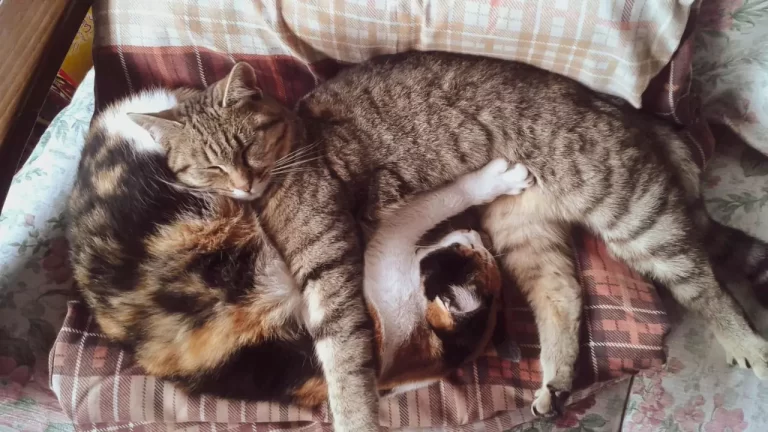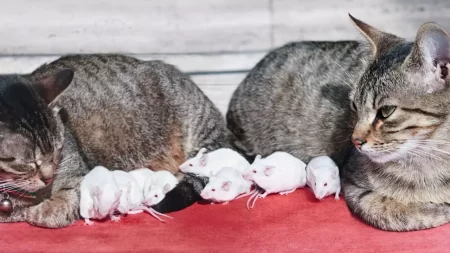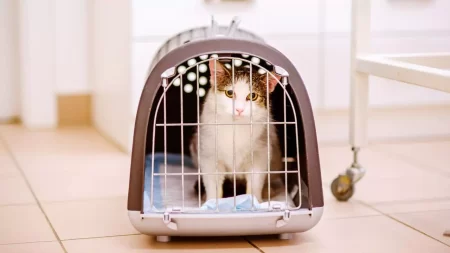If you have more than one cat in your home, you may have noticed that they often sleep on top of each other.
This behavior may seem strange or even uncomfortable to us humans, but it is actually very natural and beneficial for cats.
In this article, we will explore the reasons why cats sleep on top of each other, what different sleeping positions mean, and whether you should allow your cats to sleep together.
The Natural Behavior of Cats
Cats are often perceived as independent and solitary animals, but they are actually very social and enjoy the company of their own kind. In the wild, cats live in groups called colonies, where they share resources, territories, and social interactions. Cats in colonies bond with each other through grooming and sleeping together. These behaviors help them maintain their hygiene, health, and emotional well-being.
Domestic cats retain their natural instincts and behaviors from their wild ancestors. Even though they do not need to hunt or defend themselves from predators, they still seek out social contact and comfort from other cats. Grooming and sleeping together are ways for cats to express their affection, trust, and loyalty to each other.
Reasons Why Cats Sleep On Top Of Each Other
There are several reasons why cats sleep on top of each other. Some of the most common ones are:
- Seeking warmth and comfort: Cats have a higher body temperature than humans, and they prefer warm and cozy places to sleep. Sleeping on top of each other helps them conserve heat and feel comfortable. This is especially true in cold weather or when they are sick or injured.
- Marking their territory: Cats have scent glands on various parts of their body, such as their cheeks, paws, and tail. When they rub against each other or sleep on top of each other, they transfer their scent and mark each other as their own. This is a way for cats to communicate their ownership and belonging to a group.
- Feeling secure and bonded: Sleeping is a vulnerable state for any animal, and cats need to feel safe and relaxed when they sleep. Sleeping on top of each other provides them with physical and emotional security. It also strengthens their bond and shows that they trust and care for each other.
- Hormonal reasons: Cats may also sleep on top of each other due to hormonal changes or cycles. For example, female cats may seek out male cats for warmth and protection when they are in heat. Male cats may also cuddle with each other to assert their dominance or reduce aggression.
Understanding Different Sleeping Positions
Cats can sleep in various positions, depending on their mood, personality, and relationship with their sleeping partner. Some of the most common sleeping positions are:
- Curled up in a ball: This is a common position for cats to sleep alone or with others. It helps them conserve heat and protect their vital organs from potential threats. It also indicates that they are content and comfortable.
- On their backs: This is a rare position for cats to sleep in, as it exposes their belly and makes them vulnerable. It means that they are very relaxed and trust their sleeping partner completely. It also shows that they are confident and happy.
- Sitting upright: This is a position for cats who want to nap but also stay alert. They may sit upright with their eyes closed or slightly open, ready to spring into action if needed. They may also lean on their sleeping partner for support and balance.
- On top of their humans: Some cats may choose to sleep on top of their human companions instead of other cats. This shows that they consider their humans as part of their family and trust them deeply. It also means that they want to be close to them and get their attention.
- Tucked in together: This is a position for cats who are very close and affectionate with each other. They may tuck their heads under each other’s chin or wrap their tails around each other. This shows that they are very happy and comfortable with each other.
Final Thoughts: Should You Allow Your Cats to Sleep Together?
Sleeping together is a natural and healthy behavior for cats, as it provides them with many benefits such as warmth, comfort, security, bonding, and communication. Unless your cats show signs of stress or discomfort when sleeping together, you should not interfere with their sleeping habits.
Instead, you should provide them with enough space, bedding, toys, food, water, litter boxes, scratching posts, and hiding places to meet their needs and preferences.
You should also respect their individual personalities and preferences when it comes to sleeping alone or with others.







